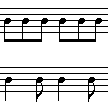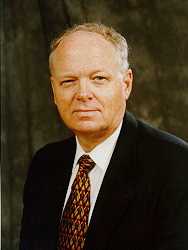|
Performance Practice For more information about Dr. Anderson, visit his faculty web site. Or you may contact him via email. |
Introduction Renaissance Baroque Classical Romantic
Two Compositional Styles
-
"Prima prattica" (Palestrina style continues to be used)
-
"Seconda prattica" (New style linked to rise of dramatic forms: cantata, opera, & oratorio.)
|
Polarity of the outside voices becomes the norm in the late Baroque. |
Doctrine of Affections ("Affektenlehre")
-
An aesthetic theory of late Baroque period; suggests that man is influenced by various basic moods or emotional states.
-
There are musical procedures and compositional devices that are appropriate to each of these moods.
-
Single movements are usually governed by a single affect which remains static and consistent throughout the movement.
-
Contrasts of emotion usually change only with changes of movement or clearly defined sections!
|
Dance tempos and rhythms tend to dominate much of music of Baroque. |
Voices and Instruments
-
Find rise of virtuoso singer (age of bel canto).
-
Voice parts often seem to be instrumentally conceived.
-
Use of continuo implies at least 2 performers; one at keyboard instrument and one to double the bass line.
a. The organ and harpsichord much preferred over use of piano.
b. Use cello, double bass, or bassoon (in place of the viola di gamba) to double the bass line. -
Instruments often doubled the voice parts even when not indicated in the score or when parts do not survive (e.g. the Bach motets).
-
Balance of voices and instruments:
a. Instruments often equaled or even outnumbered singers.
b. The ratio of winds to strings was more equal than in modern orchestra; thus there were more winds (with parts doubled).
Problems of Notation
-
Imperfections of notational system can lead to confusion:
a. Did not have a double dot.
b. Did not have a triplet sign. -
At times, singing or playing exactly as written is totally wrong!
-
Early Baroque music still necessitates musica ficta alterations.
-
"Overdotting"
(e.g. 
performed as 
or 
etc.) a. Used in pieces with many dotted rhythms.
b. The dot is often treated as a rest.
c. Especially called for in French Overtures (as in Messiah).
d. Application to "Scotch Snap" is debatable.
e. When dotted figures occur simultaneously with triplet figures, the ratio usually changes from 3:1 to 2:1 (See 6 below). -
"Notes inégales"
a. Particularly prominent in French Baroque music.
b. Equally notated rhythms become unequal in performance; i.e.

= 
etc. -
Resolution of simultaneous or successive occurrences of duple and triple rhythmic motives:

= 
-
Ornamentation
a. Specifics demand great study (See Robert Donington and others)
b. Ornamentation generally begins on the beat.
c. Trills begin on the note above main note with a variety of ways of termination.
d. One was expected to ornament the return of the "A" music in a Da Capo Aria.
e. Bach is unusual; he wrote out most of his ornamentation. -
Tempo
a. Terms suggest as much about expression as pace (thus allegro means "cheerful" not fast)
b. Should in general maintain consistent tempo throughout section with major changes coming at major sectional divisions.
c. Is appropriate to ritard at major structural cadences though not at every cadence.
d. The term "adagio" at the end of a piece of music may suggest that the music become gradually slower rather than suddenly slower.
e. Baroque music should always dance and one should strive for this feeling at whatever tempo is used. -
Dynamics
a. Much fluctuation is built into the scoring (e.g. the concerto grosso with the ripieno/concertino groupings).
b. Terraced dynamics with moderate fluctuations of a single degree are appropriate; romantic crescendi or decrescendi are anachronistic.
c. A continuous crescendo is occasionally indicated (as in the St. Matthew Passion of Bach).
d. If the movement begins with no marking, it is assumed to start forte.
| If you would like to be added to the TSMP Email Mailing List and receive periodic notifications of new articles and updates to this website, then please email TSMP.
The Texas School Music
Project is a source for ideas and information
concerning pedagogical
practices in the music classroom or rehearsal hall. The TSMP is a service provided to
all music specialists by the faculty
of
the Department of Music
at Stephen F. Austin State University. Copyright ? 2002, Department of Music at Stephen F. Austin State University |
